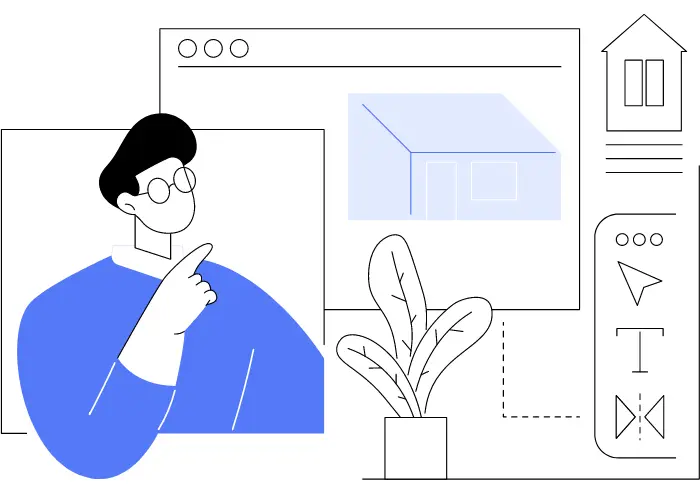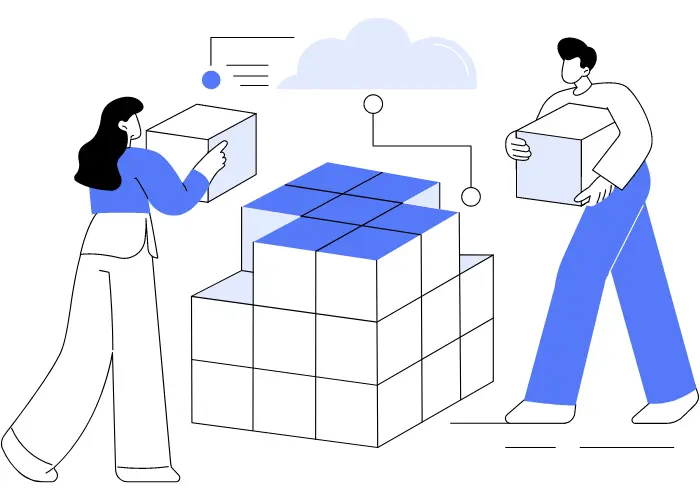What is Design and Modeling and How to Get Started?

Have you ever held a brand new phone that feels impossibly thin and sleek? Or sunk into a chair that cradles your body perfectly? Those amazing products weren't born by accident! They're the result of design and modelling, a powerful team that transforms ideas into reality. Curious how it works? Imagine this: A designer isn't just doodling on a notepad. They're sketching, brainstorming, and testing different concepts to find the perfect solution. Then, they use special software to create a digital model, a super-realistic image of the product. This model lets them see how it will look, function, and even identify any potential problems before it's ever built. It's like having a magic window into the future of the product!
Think you might want to be a part of this creative process? Check out design and modelling courses. They'll equip you with the skills to turn your ideas into tomorrow's coolest gadgets and furniture!
Jump To Section

Earn As You Learn
Earn 25% commission when your network purchase Uplyrn courses or subscribe to our annual membership. It’s the best thing ever. Next to learning,
of course.
What is Design?
Design isn't just about making things look attractive. It's about solving problems creatively and crafting solutions that seamlessly integrate into our lives. Imagine staring at a blank page. Designers don't wait for inspiration to strike! They're busy researching, sketching like crazy, and brainstorming tons of ideas. They're on a mission to find the perfect solution, something that not only looks good but functions flawlessly.
But design isn't a solo act. It's all about collaboration and communication. Designers work hand-in-hand with engineers and other specialists to make sure their ideas are feasible and meet everyone's needs. They use sketches, drawings, and even 3D models to communicate their concepts and get feedback. This back-and-forth discussion helps them refine their design until it's absolutely perfect and ready to be transformed from idea to reality.
So next time you use a product that's easy to use and looks fantastic, remember the amazing world of design that brought it to life! This process of turning ideas into user-friendly solutions is the foundation of everything in design and modelling.
What is Modelling?
Modelling in the world of design and modelling is more than just crafting miniature toys. It's the exciting phase where a designer's brilliant concept gets transformed into a realistic sneak peek. Imagine a designer with a phenomenal idea for a self-lacing shoe. Design and modelling allow them to create a digital model, a supercharged blueprint that lets them see the shoe from every angle. They can virtually test how it will hug your foot, how the self-lacing mechanism functions, and even identify any potential problems before a single prototype is built. It's like a time machine that lets them iron out any kinks before anything gets manufactured. Want to learn how to create these amazing digital mockups yourself? There are tons of awesome design and modelling courses online that can teach you the ropes.
Design: The Blueprint of Creation
Design is the mastermind behind everything from the phone in your hand to the comfy chair you love to sink into. It's the architect's blueprint, the roadmap that takes a fuzzy idea and transforms it into a tangible solution. Let's peek behind the curtain and see how it works:
Conception & Ideation
This is where things get messy. Designers don't just wait for inspiration to strike. They're on a mission to brainstorm like crazy, sketching out tons of ideas and researching everything they can about the problem they're trying to solve. It's all about finding the perfect solution!
Communication & Refinement
Great ideas need a voice! Designers use sketches, drawings, and even early digital models to present their concepts and get feedback. This back-and-forth discussion helps them refine their design until it's polished and ready to go.
User-Centric Approach
Designers put themselves in the shoes of the real people who will use their creation. They actively consider user behaviour and preferences to craft something that's not just functional but truly user-friendly. After all, good design makes our lives easier, and that's what it's all about!
Modelling: Bringing Designs to Life
Modelling takes a designer's brilliant concept from dream to "almost reality". It's the exciting phase where the designer's vision gets a physical or digital form, allowing them to see how it will actually look and function before the real thing arrives!
Physical Representations
Imagine a sculptor using clay to create a miniature model of a new video game character. That's the hands-on approach of physical modelling! Designers can build prototypes with cardboard and tape, or use advanced techniques to create detailed scale models. These physical models let them get a feel for the size, weight, and even user interaction in the real world.
Digital Simulations
The tech world thrives on digital simulations! Designers use powerful software to create super-realistic 3D models on computers. You can rotate them, see how they'll function in real-life scenarios, and even identify potential problems before anything gets built.
Communication & Collaboration
Remember, design and modelling are team sports! Designers use these models to communicate their ideas with engineers, marketers, and other specialists. This collaboration ensures the final product is not just beautiful but also functional and meets everyone's needs. Curious about creating these digital masterpieces yourself? There are tons of awesome design and modelling courses online that can teach you the ropes!

Conclusion
Ever wondered how the world around you transforms from a jumbled idea to the things you use every day? Look no further than the dynamic duo of design and modelling! It's not just about making things pretty; it's about solving problems creatively and crafting solutions that fit seamlessly into our lives.
They are the secret ingredients that take a spark of an idea and turn it into a tangible reality. From the phone in your pocket to the furniture in your home, every object tells a story of working together.
You can be a part of this exciting story! If you've got a creative itch and a passion for finding solutions, consider diving into the world of design and modelling courses. These courses will equip you with the skills to take your ideas from dream to prototype, and who knows, maybe your creation will be the next game-changer!
FAQs
What is the difference between software design and modelling?
Imagine the inner workings of a program like a complex maze. Software design tackles this maze, focusing on its structure and functionality. They're the architects, laying out the foundation and ensuring everything runs smoothly. Modelling, on the other hand, creates a visual representation of this design. Think of it as a blueprint – a clear picture of how the software will look and function for the user. They work hand-in-hand to make sure the program is well-organised, easy to understand, and meets user needs.
What is a design model?
There's no single mould for a design model. The approach can morph depending on the project and industry. But most models follow a similar path, like brainstorming a ton of ideas, refining them based on real-world feedback, and rigorously testing them before finalising the design. It's a creative loop that ensures the best possible outcome.
What are the four elements of a design model?
While the specific elements might differ slightly, many design models share these core principles:
- Problem Definition: Identifying the exact problem the design aims to solve. What challenges are we trying to conquer?
- User Research: Understanding the target audience. Who will be using this design, and what are their needs and behaviours? This isn't about making assumptions; it's about gathering real user data.
- Ideation & Development: Exploring and perfecting design solutions. Designers brainstorm a bunch of ideas and refine them based on feedback.
- Testing & Evaluation: Gathering feedback from users and iterating on the design based on the results. Is it working as intended? Does it need tweaks? This ensures the design meets user needs before it's set in stone.


Leave your thoughts here...
All Comments
Reply